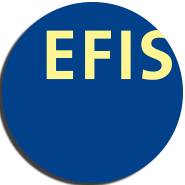Aloulou
Annunziato
Bacher
Barata
Barone
Baumjohann
Becher
Beilhack
Berberich-Siebelt
Berod
Bohle
Bopp
Borghans
Brenner
Buchholz
Cumano
Daniel
De Sousa
Delacher
Diaz-Munoz
Eberl
Edinger
Ellmeier
Elo
Fazilleau
Gerlach
Graca
Gratz
Heissmeyer
Ho
Hoffmann
Hofmann
Hogan
Huber
Huehn
Huppa
Iannacone
Jeker
Joller
Kekäläinen
Klein
Krueger
Lahesmaa
Linterman
Liston
Martins
McNamee
Meerwijk
Meyer-Hermann
Mittrücker
Müller
Pace
Perucha
Peterson
Piaggio
Prinz
Richard
Roychoudhuri
Rudin
Salomon
Samson
Schlenner
Schober
Schumann
Schurich
Silva-Santos
Soares
Sparwasser
Stein
Stepanek
Strid
Vaeth
Van Wijk
Veldhoen
Walker
Wekerle
Whithers
Wolkers
Zielinski

University of Fribourg
Department of Oncology, Microbiology and Immunology (OMI)
Chemin du Musée 5
1700 Fribourg
Switzerland
Lab Website:
Research Interests:
Our laboratory is combining multiple platforms including multicolor flow cytometry, functional in vitro assays and high-end microscopy to “shed light” on the molecular and cellular processes that govern adaptive immune responses mediated by cytotoxic CD8+ T cells. We follow three lines of investigation:
- We are examining the role of key regulators of T cell activation by using genetically modified CD8+ T cells. Our technical platforms include flow cytometry, RNA sequencing, viral infection models, immunofluorescent analysis and twophoton microscopy (2PM) of lymphoid tissue. Using software-based analysis of key parameters, we determine the critical decision-making steps at the onset of immune responses.
- We follow CD8+ T cells at their effector sites, for example in exocrine glands, skin and other non-lymphoid organs and observe how these cells contribute to host protection. A special focus is on tissue-resident memory T cells that provide a first line of defense against reinfection.
- We are applying large-scale imaging techniques, Optical Projection Tomography (OPT) and Selective Plane Illumination Microscopy (SPIM) for a quantitative analysis of adaptive immune responses by visualizing the entire 3D structure of lymph nodes and other organs during inflammation.
The combination of these approaches permits to obtain unprecedented insight into the dynamic nature of the adaptive immune system on a single cell level.




